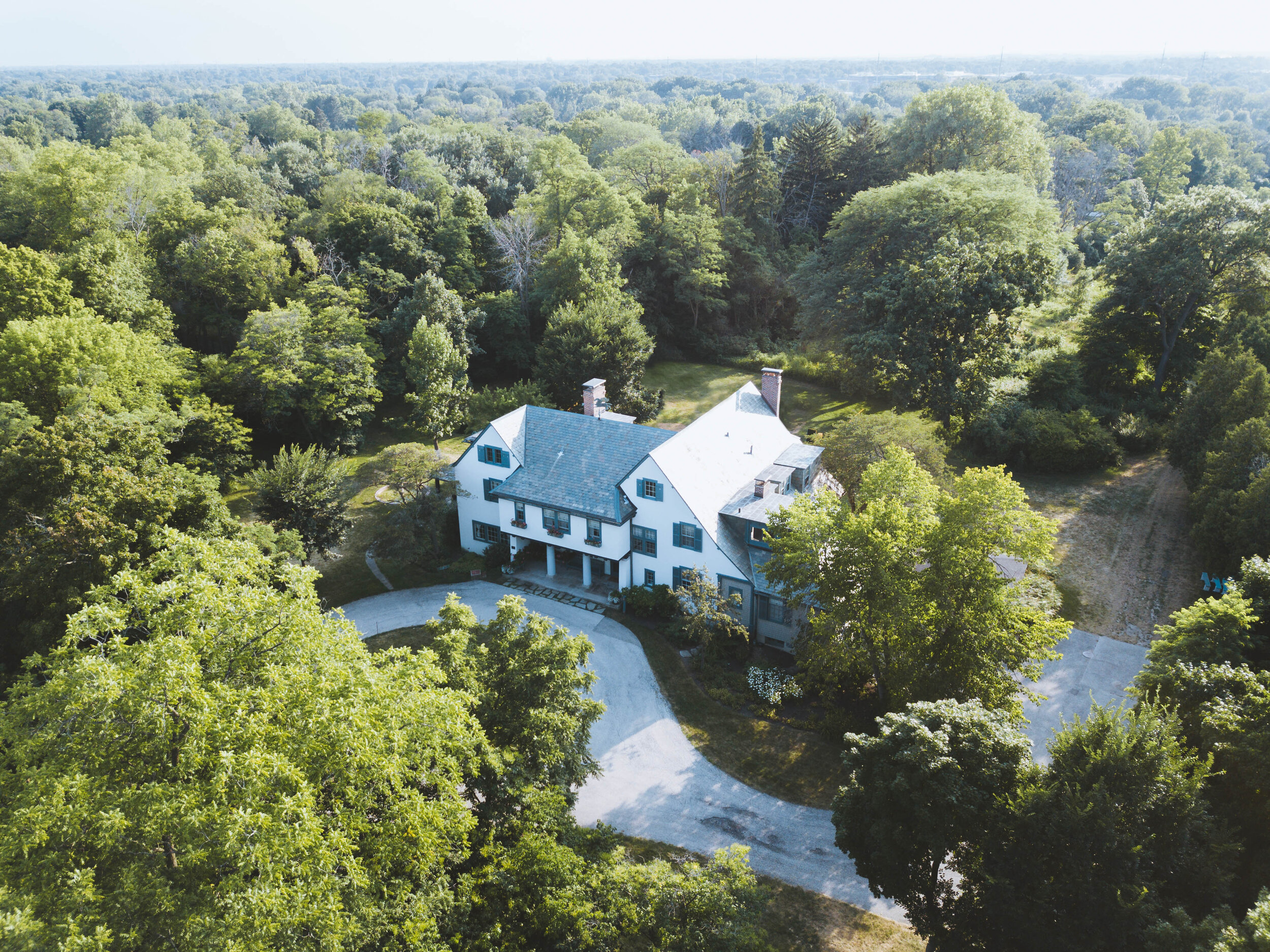
Ragdale is a nonprofit artist community located on the former country estate of Arts & Crafts architect Howard Van Doren Shaw and poet and playwright, Frances Wells Shaw.
Nearly 150 residencies, numerous fellowships, and a variety of themed residencies are now offered annually to creative professionals of all types, making Ragdale one of the largest interdisciplinary artist communities in the country. Ragdale residents represent a cross-section of ages, cultures, experiences, and mediums, for a diverse and vibrant community.
In each session, artists-in-residence enjoy uninterrupted time for work and creativity, a supportive environment, dynamic artist exchanges, 50 acres of idyllic prairie, a 7-acre historically significant campus, and a family-style dinner each evening.
Ragdale’s Mission
To steward an inspirational environment that fosters courageous creativity and inclusive community through its artist residencies.
We give courage to and provide a setting for creative exploration and achievement by establishing a culture of excellence, generosity, and inclusivity within Ragdale’s historic campus and native prairie landscape—the essential qualities of our community’s 120-year legacy as a generative home of artistic production. Through residencies, fellowships, and thematic collaborations, Ragdale annually supports 150 artists, designers, and scholars from around the world, all of whom are seeking time and space to pursue distinctive works of the imagination. Ragdale’s commitment to cultural equity and community engagement underpins dozens of public projects each year, led by the Ragdale Youth Engagement program. Our educational outreach empowers creative youth and their teachers with uncommon opportunities for live discourse, hands-on investigation, and mentoring, with artists who are actively defining and shaping creative culture.
Equity and Inclusion Statement
We believe
• Everyone deserves equal access to a full, vibrant creative life, which is essential to a healthy and democratic society.
• Cultural equity is critical to the long-term viability of the arts sector.
• Inequity and injustice occur when individuals have unequal access to resources.
• We must all continually hold ourselves accountable, because acknowledging and challenging our inequities is how we can effect change.
• Artists, their art, their process, and the organizations they create and support play an essential role in witnessing, demonstrating, and providing inspiration to resolve societal inequity and injustice.
We strive
• To create a culture of equity by ensuring that all people—including but not limited to those who have been historically underrepresented based on race/ethnicity, age, disability, sexual orientation, gender, gender identity, socioeconomic status, geography, citizenship status, or religion—are represented in the development of Ragdale’s policies; its support of artists; the nurturing of accessible, thriving venues for expression; and the fair distribution of programmatic, financial, and informational resources.
• To pursue cultural consciousness throughout our organization through substantive learning, transparent policies, and consistent evaluation.
• To commit time and resources to expand more diverse leadership within our board, staff, and advisory bodies.
• To acknowledge and dismantle inequities and barriers to entry within our policies, systems, programs, and services.
• To establish and nurture programs and policies that engage the full breadth of society.
Ragdale is a place of retreat and imagination. It is a site where creative people find quiet contemplation in the present moment, are infused with the rich archive of the eclectic campus, and are poised for breakthroughs in development of new work. Nearly 150 creative practitioners from around the world are supported each year at Ragdale.
This free program makes the most of Ragdale's vast network of art and design professionals as well as our historic 5-acre campus to provide an engaging retreat and "artists lab" for teachers and students. We match Ragdale Fellows with the needs of schools in a series of onsite and offsite programs that foster healthy self-expression, community engagement, cultural exchange, and career development. Available to all regional schools, with an emphasis on underserved communities in Lake County.
The Foundation
The Ragdale Foundation maintains the historic property including the iconic Ragdale House, Barnhouse, Hart-McCutcheon Property, Studio House for Dance and Music, Meadow Studio, and gardens.
In 2012 the Foundation completed its award-winning restoration of the Ragdale House. New initiatives are exploring the options for campus-wide accessibility, expansion of the garden, and more.
In 2013 Ragdale launched an international competition to reinterpret Shaw’s Ring as a temporary, experimental environment. This annual competition provides artists, architects, and designers with the unique opportunity to devise and construct a performance venue and gathering place on the historic Ragdale campus. Biennially we seek inventive, large-scale submissions that explore intersections of architecture, sculpture, landscape, design, public art, and performance disciplines. Howard Van Doren Shaw designed the original Ragdale Ring in 1912 as an open-air theatre for the work of his poet and playwright wife, Frances Wells Shaw.

“Ragdale is a place where creativity is nurtured in all its forms. I expected the solitude, the new friendships, and the time and space to write. I just didn’t expect to be treated so well. Poor, struggling artists take heed: at Ragdale, life is rich.”
— Christine Piper, Writer, Sydney, Australia





